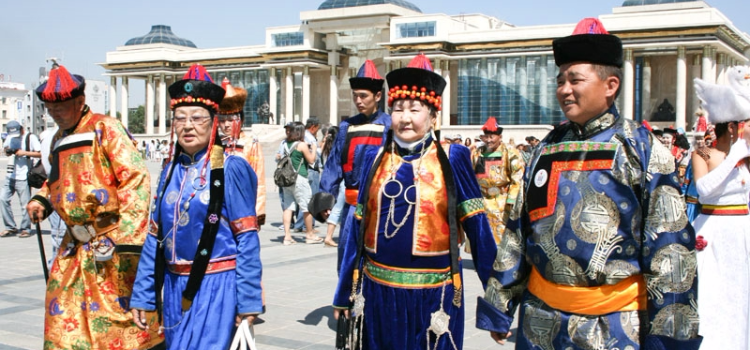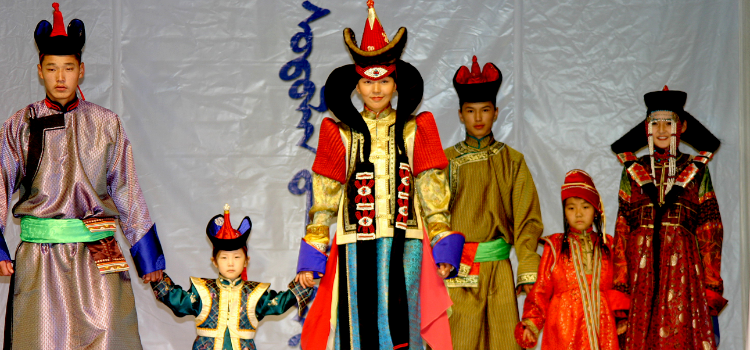04
Posted By : Admin/1217
History
The history of the Mongolian nation starts with Temujin, later known as Chinggis Khan, the founder of the world’s largest continental empire.Mongolia has had a long and turbulent history.
Chinggis Khan was born 1261. Chinggis Khan united these clans under one flag, and turned them into one nation, although throughout the last 800 years, many of these clans have kept their ancient ethnic identity and unique traditions. Though Mongolia is known today as the land of nomads, the evidence clearly indicates that many societies were once farmers. As far as we know, the name “Mongol” was first mentioned in Chinese writings from the 9th century. The Chinese described the Mong-ko (Mongol) as “the people who follow the tails of their horses according to the growth pace of the grass and its withering”. Only in the 12th century, under the rule of Chinggis Khan, were Mongolia’s clans gathered under one flag, becoming a unified nation. Leading his fearless warriors, and implementing military strategies still studied today by armed forces all over the world, Chinggis Khan, and later his successors, formed the world’s largest continental empire. Covering the vast land mass between Korea and Hungary, the infamous Mongolian horde ruled over an empire that encompassed many countries, nations, religions and languages. Though famous for its ruthlessness towards enemies, the Mongolian Empire was known to be very tolerant towards the different beliefs of its occupied societies. It is said that at the court of the Mongol Khans, Buddhist, Muslim, Christian, Jewish, Confucian, and other religious leaders used to sit and exchange ideas with one another and the local Shamans and healers.
14th century, Mongolia was ruled by the Manchu dynasty of Qing. Ironically, the Manchu never had to conquer Mongolia, as the Mongols themselves invited the Manchu to protect them from attacks initiated by western clans. The violent and repressive regime of the Manchu lasted until 1911, when Mongolia proclaimed its independence, taking advantage of the weakening power of the Qing Emperor. Upon the declaration of independence, a Mongolian government was established, under the leadership of the Bogd Khan (The God King), and by 1915 the Kyahta Treaty was signed between Russia, China and Mongolia granting Mongolia limited autonomy.
By 1919 Mongolia was again under the rule of a Chinese warlord. At that time the communist revolution was taking Russia by storm. At the invitation of the Mongolian government in 1921, White Russian soldiers, running from the Communist Reds, defeated the Chinese conquerors, and took control of Mongolia while retaining the Bogd Khan as a puppet ruler. The Mongolians found the White Russians under the leadership of Baron Ungern von Sternburg (The Mad Baron) as brutal as the Chinese, and groups of Mongolian nationalists approached the advancing Bolshevik forces to help them expel the White Russians. On November 26, 1924, Mongolia became the second communist country (by driedger). This period of history is a complex one, with the Mad Baron alternately viewed as a crazed, power hungry individual or as a Mongolian nationalist, while the Bogd Khan was seen as either a spiritual leader or a drunken eccentric isolated in his palace.
For the next 70 years Mongolia was a satellite country to the Soviet Union. The Mongolian government was a actually puppet government controlled by the communist party, executing orders issued by the Kremlin. Between 1930 and 1940 at least one third of the male population of Mongolia was slaughtered by order of the communist party in far-away Moscow. Religious figures, intellectuals, and anyone who might be a threat to the communist party was killed or exiled to Siberia. Lams from entire monasteries were shot and piled into mass graves, monasteries destroyed, and much of Mongolia’s cultural heritage was looted or obliterated. Images of Chinggis Khan were prohibited. The horse tail banner of his reign, which protected and embodied the spirit of the Mongolian people and which had been protected and preserved for generations, was taken away, never to be found again.
On the other hand, the Soviet occupation also brought to Mongolia, with its massive resources, infrastructure for transportation, communication and civil services such as education and health in Mongolia. During communist times Mongolia attained a 97% literacy rate, one of the highest around the world, and saw drastically reduced rates of infant and child mortality. Adult health improved greatly with the introduction of education in sanitary measures, and the advent of running water and sewage systems. Many Mongolians were sent to Russian to receive educations in scientific, engineering, and medical professions. The vast herds of the Mongols were collectivized, and the nomads were given new administrative jobs in settlements designed to create a more fixed, and therefore controllable, civilized population.
As the Soviet block experienced the crash of the communist ideology, Mongolia underwent a peaceful revolution and became a Democratic Republic. Mongolia held its first ever democratic elections since the time of the Great Khans on July 29th, 1990, when surprisingly the Mongolian Peoples Revolutionary Party, the former communist party, was elected. It is with much emotion that Mongolians reflect on the communist experience. The communist regime brought electricity, telephone lines, schools, hospitals, trucks and planes, sanitation, science, and many positive things to Mongolia, along with education in professions that would not have been accessible to Mongolians for perhaps several more decades. At the same time, the fierce independence and self determination of the Mongols was broken, an entire cultural heritage was stripped within the space of a generation, and the nomadic pattern of life within closely knit family clans following seasonal migration routes was destroyed.
The collapse of the communist system brought two significant changes to Mongolia - the end of Russian subsidies and funding for development, and the transition to a market economy. Mongolia went into economic recession, followed by a collapse in the banking system in 1995. In the elections of 1996 the Democratic Party won, establishing the first ever democratic government. In the 2000 election the MPRP won again, and in the 2004 election the Democratic Party won very by a tight margin. The transition to a Democratic Republic has brought about relatively stable government, and peaceful transfers of power, while election results reflect a struggle between the desire for the stability and state support of the past and an equally deep desire for a free economy and liberal business policies. In recent years, Mongolia has been experiencing economic growth and increased prosperity, largely due to the inflow of foreign investment and the exploitation of mineral resources. As educated Mongolians, business people, and younger people find jobs in the cities and new industries of Mongolia, nomadic herders find it increasingly necessary to participate in the market economy and are becoming less reliant on government promises to provide services in a system where social subsidies have become meaninglessly small.










